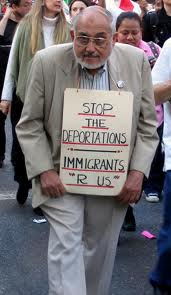 Good Georgia Lawyer Continues its Series on SUV Rollover Deaths in Part Four:
Good Georgia Lawyer Continues its Series on SUV Rollover Deaths in Part Four:
The problem of rollover first made national news in 1980 when CBS’s 60 Minutes aired a report on the Jeep CJ, the model for many early SUVs. The report showed footage of an Insurance Institute of Highway Safety test in which the vehicle rolled over when conducting evasive maneuvers like a quick turn to avoid hitting something in the road. Despite the rollover risk, Americans flocked to the vehicle. Thus the auto industry began producing similar vehicles. Using the Jeep as a model, Ford introduced its first SUV, the Bronco II, which rolled out in March 1983 as an immediate hit. Throughout the 1980s, the company sold over 700,000 Bronco IIs — double their initial projections. Almost immediately, however, the Bronco II began to have rollover problems.
As deaths and horrific injuries mounted, Ford knew as early as 1981 that (1) its SUV’s were tipping onto two wheels at speeds as low as 20 miles per hour and that (2) it had considered shelving the Bronco II project during development. In the spring of 1982, Ford engineers recommended one important change: a 3 to 4 inch widening of the vehicle track, would produce a “major improvement” in “roll characteristics.” However, Ford ignored the safety and design recommendations of its own engineers and went into production after widening the SUV by just 4/10ths of an inch despite internal Ford cost projections that showed it would have cost just $83 per vehicle to widen the vehicle and lower the center of gravity to achieve a safe design. “Ford’s management — conscious of competition with GM’s Chevrolet Blazer” ignored their own engineers’ safety recommendations because it would have delayed “Job 1″ (the vehicle’s first date of production).” Thus, Ford “rushed to cash in on this rapidly expanding, high-profit market with little attention to the safety implications of their vehicle designs for SUV occupants and even less attention to the safety of motorists in other vehicles.”
However, Ford knew that problems would result from this decision. It would later be shown that in anticipation of rollover litigation, “realizing that the company’s own engineering documents showed that the Bronco II had a high propensity to roll over, injure and potentially kill a significant number of people who purchased it, Ford took the unprecedented step of gathering 113 specific documents critical to the defense in rollover litigation prior to the production of the first Bronco II.” Engineers were ordered to “sanitize” documents prior to collection: “over 50 of these documents disappeared, and none of these documents were disclosed to NHTSA during the 1988-1990 Bronco II investigation because Ford said it “didn’t notice” that the agency asked for these specific development documents.”
When litigation began to heat up, Ford paid a former company engineer, David Bickerstaff, $5,000,000 over eight years to lie in a series of 30 rollover cases. In June 1990, Bickerstaff sent Ford a letter in which he suggested $4,000 a day payment, to “assist you [Ford] in preparing me [Bickerstaff] to testify in Ford’s favor.” Before he was paid by Ford, Bickerstaff testified that as a Ford engineer, he was concerned about the Bronco II’s propensity to roll over. After being paid by Ford, Bickerstaff testified that while working for Ford, he was not concerned about the vehicle’s low stability index. Bickerstaff also helped Ford “rig a videotape designed to convince juries that the Bronco II was not likely to roll over, by loading a Bronco II with 900 lbs. of lead shot on the floorboards and seats in a manner that artificially lowered the center of gravity.”
Thus, in April 2001, a federal judge concluded that, as a matter of law, Ford and its witness Bickerstaff engaged in a conspiracy to commit fraud. In 2001, a federal judge in Goff v. Ford concluded that Ford had engaged in a conspiracy to commit fraud. In a 1999 decision, the Indiana Court of Appeals referred to Ford’s behavior in launching the “dangerous and defective” Bronco II as “highly reprehensible” and “the crassest form of corporate indifference to safety… of the consumer.”
Continue reading →
 Georgia Injury Lawyer Blog
Georgia Injury Lawyer Blog



 Good Georgia Personal Injury Lawyers play an important role in helping stop SUV rollovers from happening. This is Part Three of The Series Concerning SUV Rollovers which covers the history of SUV Rollovers and Regulatory Response from the very beginning:
Good Georgia Personal Injury Lawyers play an important role in helping stop SUV rollovers from happening. This is Part Three of The Series Concerning SUV Rollovers which covers the history of SUV Rollovers and Regulatory Response from the very beginning:



